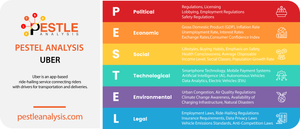The PESTLE analysis of Uber examines six key factors: political, economic, social, technological, legal, and environmental aspects of the app-based ride-sharing company.
Hey taxi! Err, I mean Uber!
Let’s see what makes Uber run smoothly and what bumps it might hit on the road.
We use something called a PESTLE analysis to check out the big picture. This tool looks at Political, Economic, Social, Technological, Legal, and Environmental factors. Think of it like checking all the parts of a car to make sure it drives well.
Oh, and here’s a cool fact: Did you know Uber started as a simple idea to solve the problem of finding a ride on a snowy night in Paris? Now, let's find out what keeps Uber zooming and what could slow it down!
Why Uber needs a PESTLE Analysis
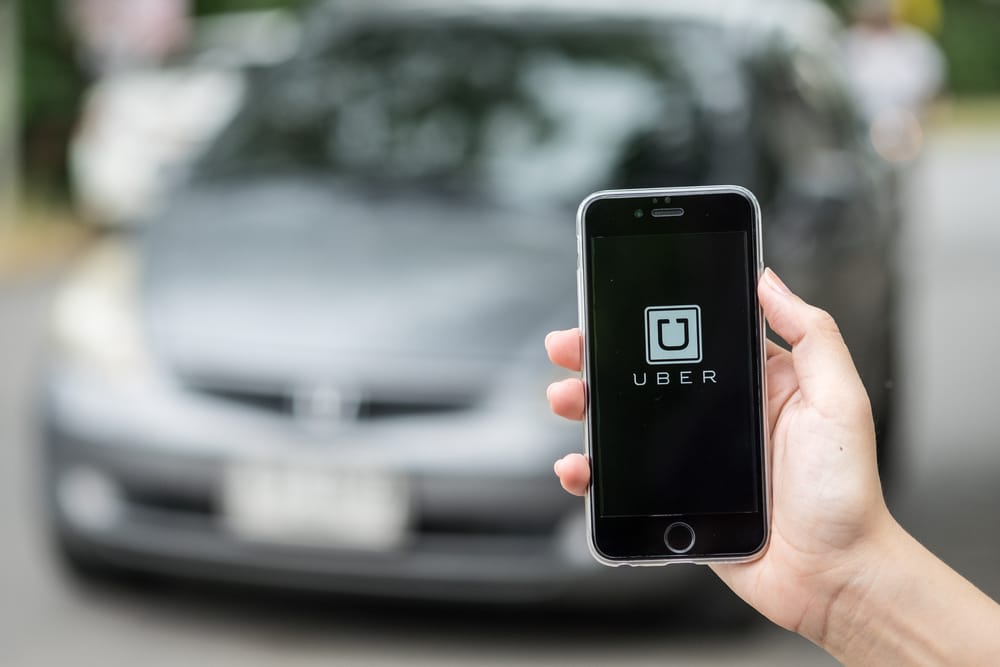
This analysis helps businesses plan better, make informed decisions, and adapt to changes in their environment.
For Uber specifically, a PESTLE analysis is crucial because it operates in a highly dynamic and regulated industry.
- Understanding the political landscape can help Uber navigate different laws and regulations in various countries.
- Economic factors like fuel prices and economic downturns impact its profitability.
- Social trends, such as changing attitudes towards ride-sharing and environmental concerns, can influence customer behavior.
- Technological advancements are at the core of Uber’s operations, and keeping up with these is essential.
- Legal issues, from driver classification to insurance requirements, directly affect its business model.
- Finally, environmental factors, like the push for greener transportation options, are becoming increasingly important.
By using a PESTLE analysis, Uber can better understand these external factors and strategically plan for the future.
Uber Political factors
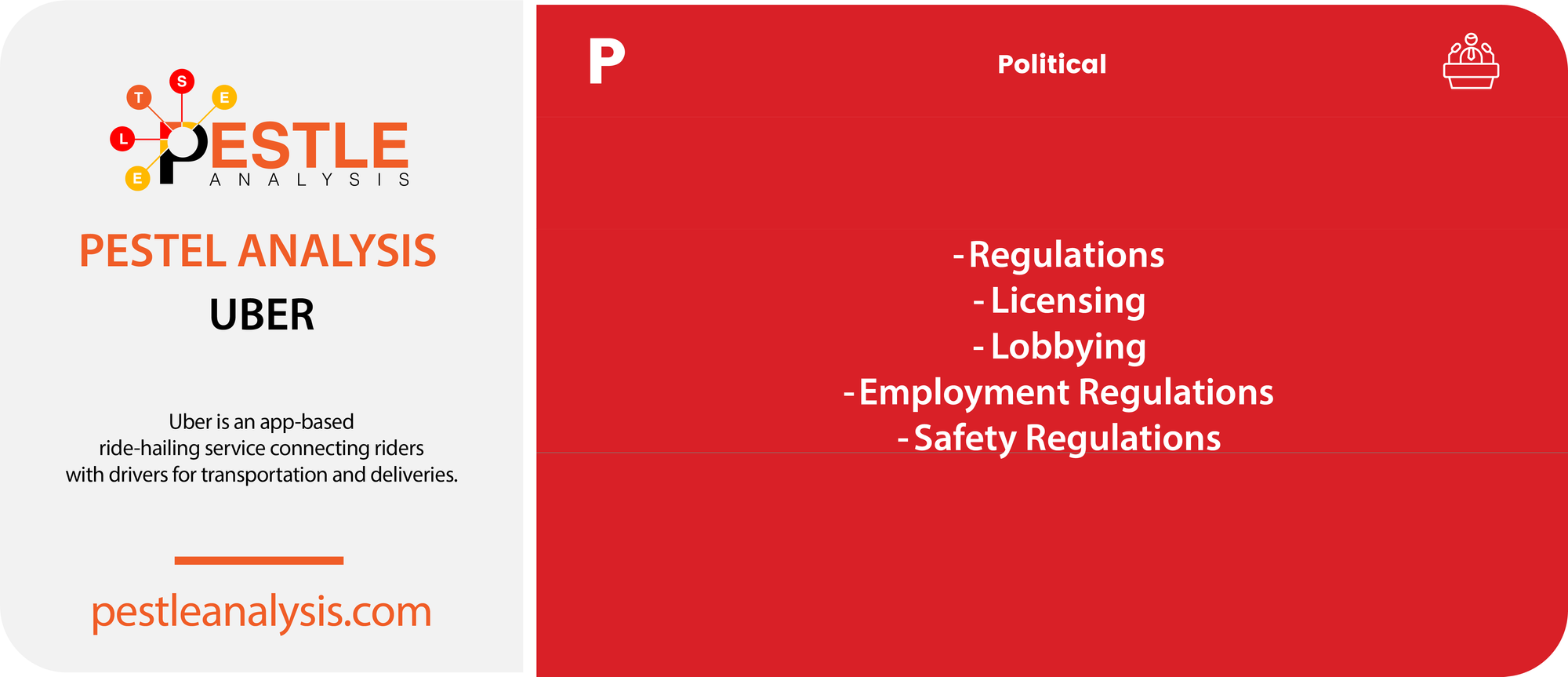
- Regulations: Governments make rules about how Uber can operate. Some cities have strict rules, making it harder for Uber to work there. Different cities and countries have their own rules, so Uber has to adjust its operations in each place. It’s like playing by different rules in every game.
- Licensing: Uber drivers often need special licenses to drive passengers, and getting these licenses can be tough and expensive.
- Lobbying: Traditional taxi companies don’t like Uber because it’s competition. They lobby (ask) governments to create rules that make it harder for Uber to compete. Sometimes, local politicians push against Uber to protect traditional taxi jobs or because of other political reasons. In some places, Uber is completely banned. This could be due to political decisions to protect local taxi businesses.
- Employment Regulations: Some places argue that Uber drivers should be treated like regular employees, not independent contractors. This means more benefits for drivers but more costs for Uber. There have been political discussions about minimum wage laws in the taxi industry and whether Uber was abiding by these rules.
- Safety Regulations: Governments want to ensure passengers' safety, so they create rules about background checks for drivers and car inspections. Governments also require Uber to have specific insurance policies to protect passengers in case of accidents, which can be costly. In its initial development, Uber didn’t have clear regulations. It was difficult to pinpoint what insurance lies in — if there is an accident, is the Uber driver at fault, or is the company itself?
Make sure to check out our complete list of all the political factors that influence not only Uber but all businesses and industries.
Uber Economic factors
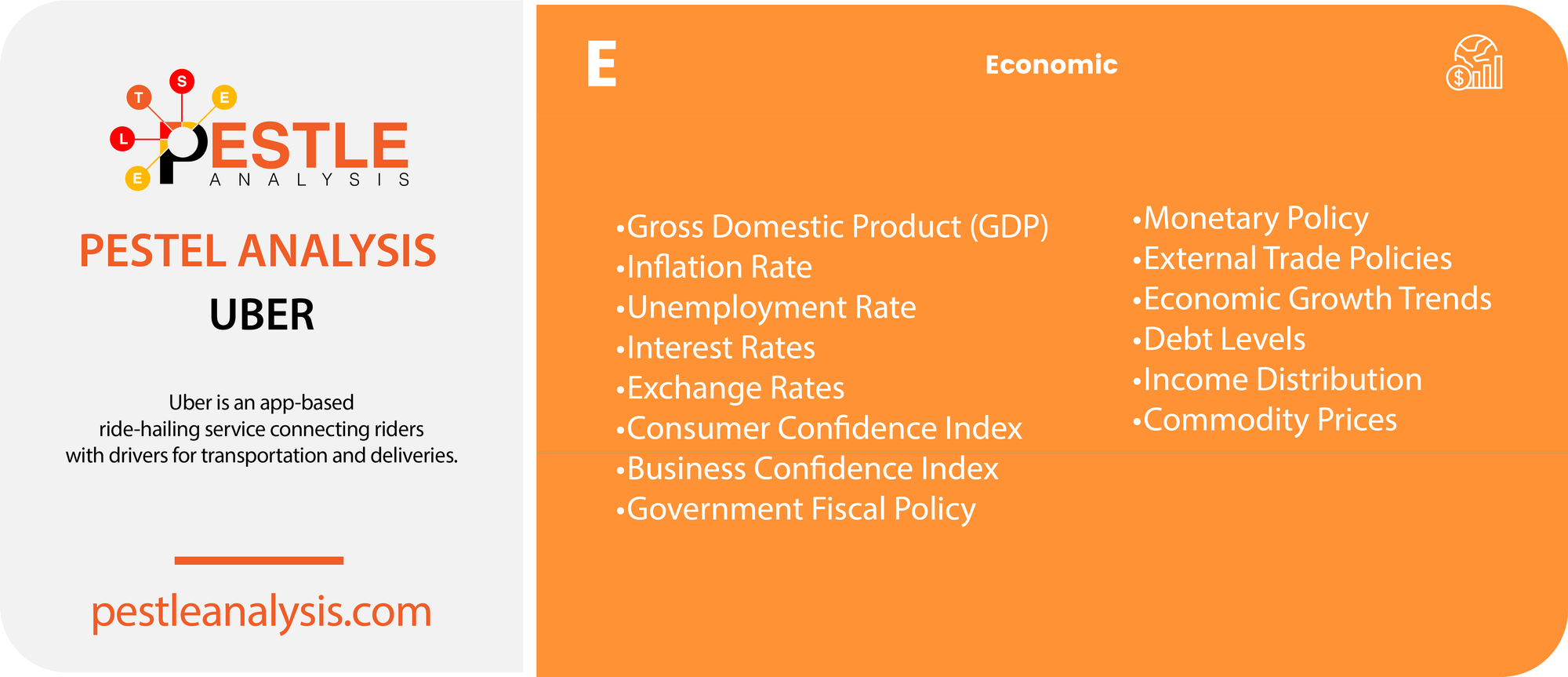
- Gross Domestic Product (GDP): A high GDP increases demand for Uber rides due to more disposable income. A low GDP means decreased demand, as people may opt for cheaper transportation.
- Inflation Rate: High inflation leads to higher costs for fuel, maintenance, and wages, potentially leading to higher ride prices. Low inflation means stable costs, making it easier to maintain pricing.
- Unemployment Rate: A high unemployment rate means more people may drive for Uber to earn income, but fewer passengers may use the service. A low unemployment rate means fewer drivers are available but potentially more passengers with disposable income.
- Interest Rates: Low interest rates mean cheaper borrowing for Uber’s investments and easier car purchases for drivers. High interest rates mean increased borrowing costs and reduced consumer spending.
- Exchange Rates: A strong U.S. dollar means higher costs for international operations and reduced profitability abroad. A weak U.S. dollar means lower operational costs internationally.
- Consumer Confidence Index: High consumer confidence leads to increased spending on Uber rides. Low consumer confidence means decreased spending on non-essential services like ride-hailing.
- Business Confidence Index: High business confidence leads to more corporate spending on Uber for employee and client transportation. Low business confidence means reduced corporate spending on services.
- Government Fiscal Policy: Increased government spending or tax cuts mean more disposable income for consumers, boosting Uber demand. Austerity measures mean reduced disposable income, decreasing ride demand.
- Monetary Policy: Lower interest rates stimulate economic growth, increasing spending and investment in Uber. Higher interest rates slow economic activity, reducing spending on ride-hailing services.
- External Trade Policies: Tariffs and trade agreements can increase costs for vehicles and technology, affecting Uber’s operations. Favorable trade policies reduce costs and improve access to necessary resources.
- Economic Growth Trends: Economic growth leads to increased consumer and business spending on transportation services. Economic downturns mean reduced spending on non-essential services like Uber.
- Financial Penalties and Compliance Costs: For companies like Uber, significant fines due to regulatory violations are more than just a one-time hit; they represent ongoing financial risks. These penalties can force a company to redirect substantial resources towards legal fees, compliance improvements, and potential future fines, thereby reducing funds available for growth and innovation. The threat of similar fines in other regions can further increase operational costs, complicating global expansion efforts and putting pressure on profitability.
- In August 2024, Uber was fined €290 million by the Dutch Data Protection Authority (DPA) for violating GDPR by transferring drivers’ personal data from Europe to the United States. A fine of this magnitude represents a substantial financial burden, directly affecting Uber’s profitability. While the appeal process could delay payment, the looming threat of such fines could lead to increased operational costs. Uber may need to allocate more resources to legal defense and compliance, which could divert funds from other strategic investments.
- Debt Levels: High national or consumer debt levels lead to economic instability and reduced disposable income, affecting Uber ride demand. Low debt levels mean more economic stability and higher disposable income.
- Income Distribution: Greater income equality means a larger customer base with more people able to afford Uber rides. Uneven income distribution means a smaller market of affluent customers, limiting demand.
- Commodity Prices: High commodity prices lead to increased fuel costs, potentially leading to higher ride prices or reduced driver earnings. Low commodity prices mean lower operating costs, making it easier to maintain pricing. Fluctuations in fuel prices can significantly impact the cost of operating Uber’s services, influencing ride pricing and driver earnings.
Want to know about the economic factors? Head over to our dedicated page for a full rundown.
Uber Social factors
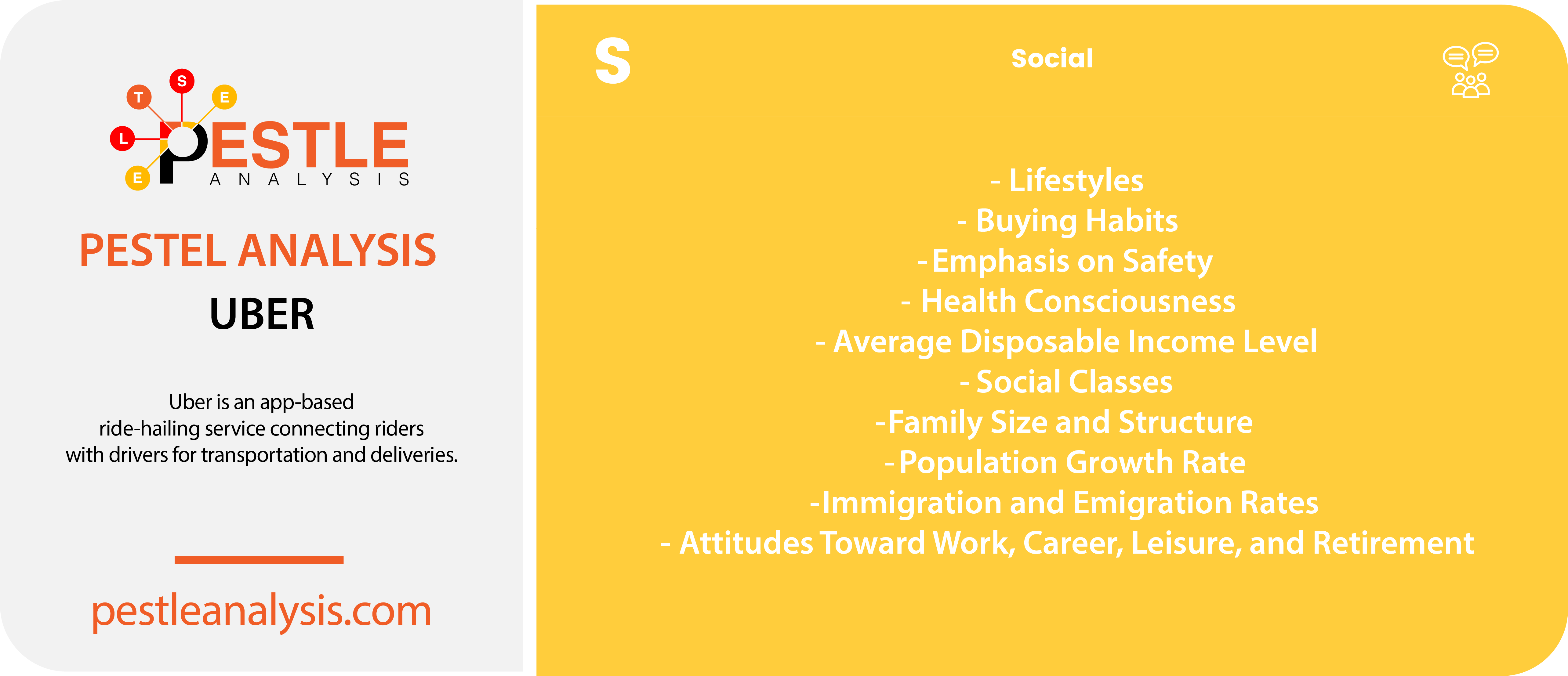
- Lifestyles: The fast-paced, on-the-go lifestyles in urban areas increase the demand for convenient transportation options like Uber.
- Buying Habits: Consumers’ preference for digital and app-based services directly impacts Uber's user base and growth.
- Emphasis on Safety: Increased emphasis on safety leads to higher expectations for driver background checks, vehicle standards, and safety features in Uber rides.
- Health Consciousness: With growing health consciousness, people might prefer private rides over crowded public transportation, increasing demand for Uber.
- Average Disposable Income Level: Higher disposable income levels mean people are more likely to spend money on ride-hailing services instead of cheaper alternatives.
- Social Classes: Different social classes may have varying levels of access to and reliance on Uber, affecting overall demand and service areas.
- Family Size and Structure: Smaller family sizes and more single-person households often lead to increased use of ride-hailing services.
- Population Growth Rate: A higher population growth rate, especially in urban areas, increases the potential customer base for Uber.
- Immigration and Emigration Rates: High immigration rates can increase the demand for Uber as new residents seek reliable transportation while they settle in.
- Attitudes Toward Work, Career, Leisure, and Retirement: Flexible work schedules and gig economy trends make driving for Uber an attractive option for many, influencing the supply of drivers.
Curious about the social trends affecting every business? We've got a detailed list with examples just for you.
Uber Technological factors
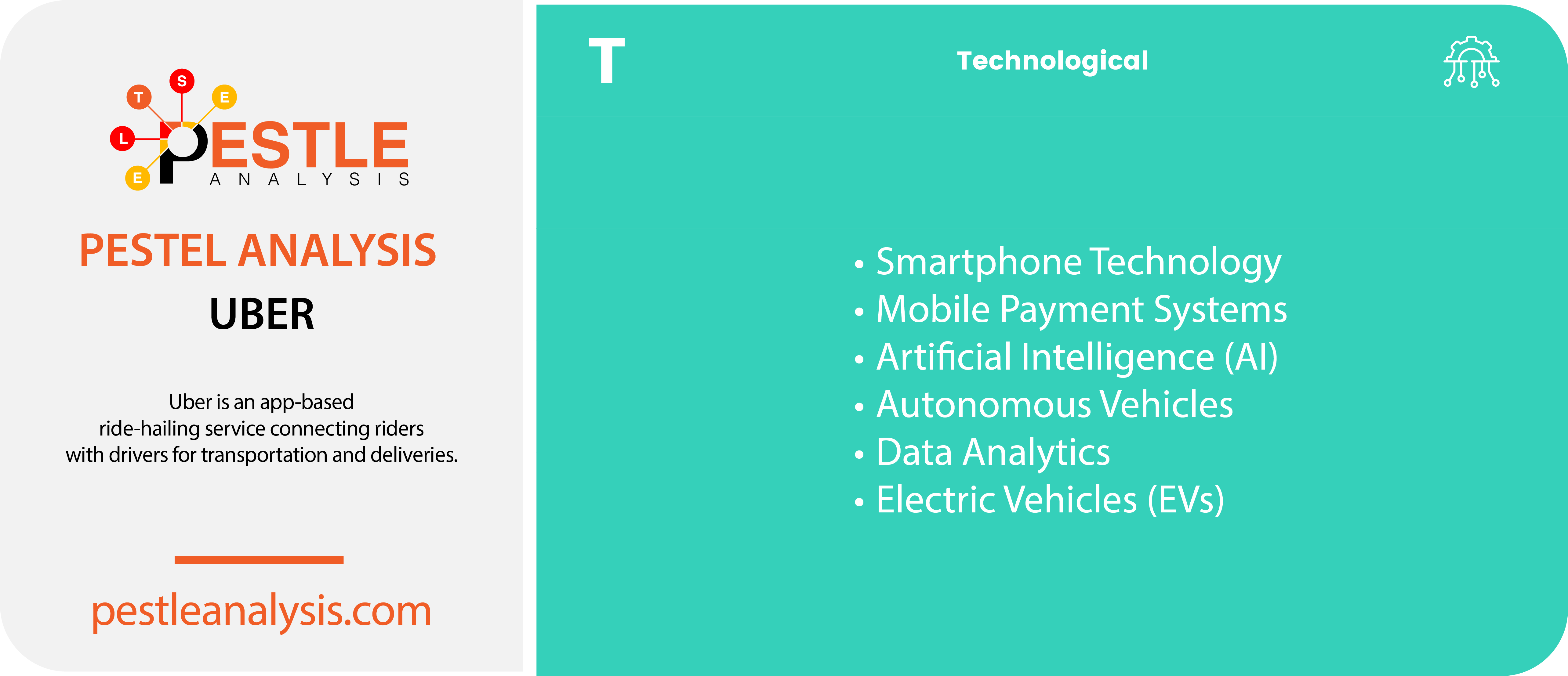
- Smartphone Technology: Advancements in smartphone technology enable seamless app functionality and GPS tracking, making it easier for users to book rides and for drivers to navigate.
- Mobile Payment Systems: Innovations in mobile payment systems facilitate quick, secure, and cashless transactions, enhancing user convenience and safety.
- Artificial Intelligence (AI): AI advancements improve route optimization, estimated arrival times, and personalized user experiences, leading to better service efficiency and customer satisfaction.
- Autonomous Vehicles: Developments in autonomous vehicle technology have the potential to revolutionize Uber’s business model by reducing reliance on human drivers and cutting operational costs.
- Data Analytics: Improved data analytics allow Uber to analyze large amounts of data for better decision-making, demand forecasting, and dynamic pricing strategies.
- Electric Vehicles (EVs): Advancements in electric vehicle technology support Uber’s sustainability initiatives by providing more eco-friendly ride options, potentially attracting environmentally conscious customers.
For the latest in tech advancements impacting all companies, visit our technological factors page.
Uber Legal factors
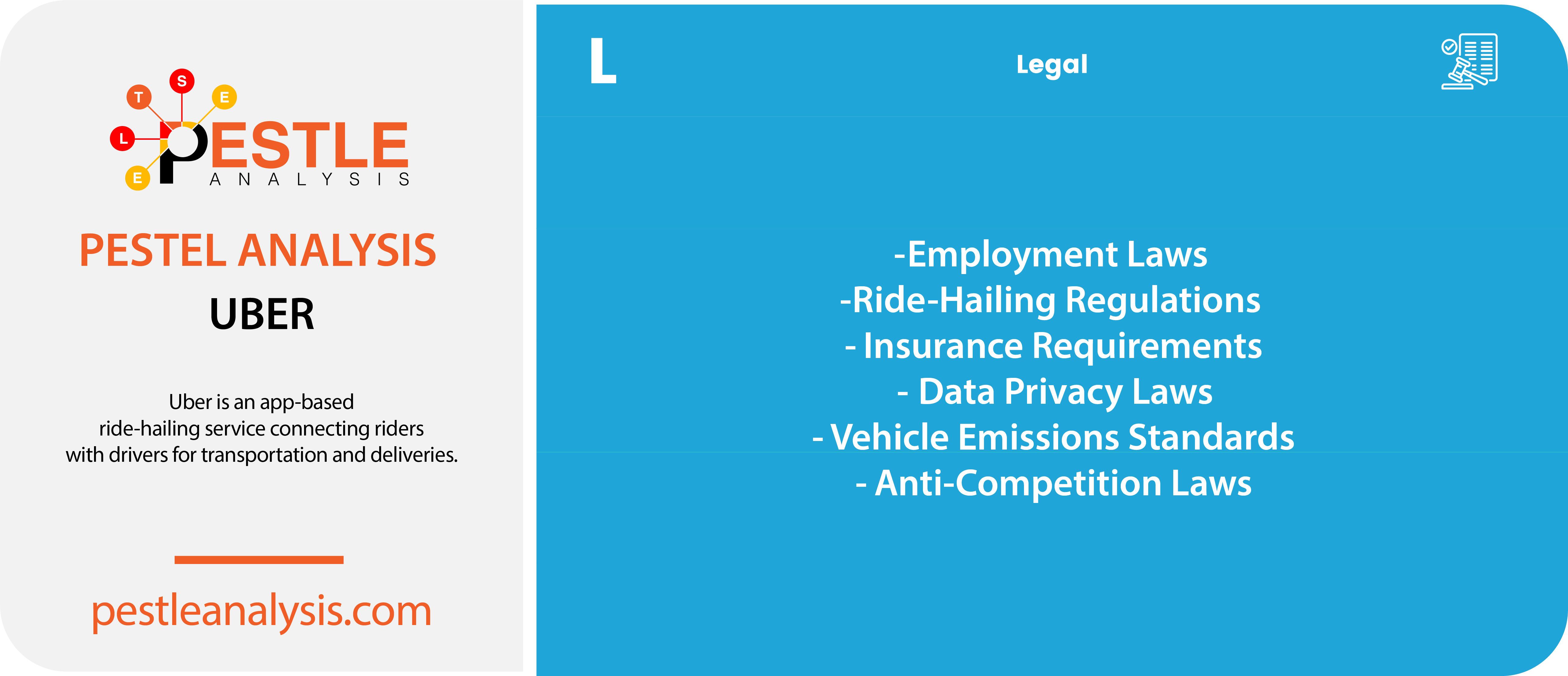
- Employment Laws: Changes in employment laws can require Uber to classify drivers as employees instead of independent contractors, impacting costs related to benefits, wages, and labor rights.
- Ride-Hailing Regulations: Local and national regulations specific to ride-hailing services can impose licensing, operational restrictions, and safety requirements, affecting Uber’s ability to operate in various markets.
- Insurance Requirements: Legal mandates for specific insurance coverage for ride-hailing drivers can increase operational costs and impact Uber’s pricing structure.
- Data Privacy Laws: Regulations like GDPR and CCPA dictate how Uber must handle user data, leading to increased compliance costs and changes in data management practices.
- Vehicle Emissions Standards: Stricter environmental regulations on vehicle emissions can push Uber to transition to electric or hybrid vehicles, impacting their fleet and sustainability strategies.
- Anti-Competition Laws: Legal actions and regulations aimed at preventing monopolistic practices can influence Uber’s market strategies, potentially limiting expansion and competitive tactics.
Legal changes can be tricky! Check out all the legal factors affecting every business in our special section.
Uber Environmental factors
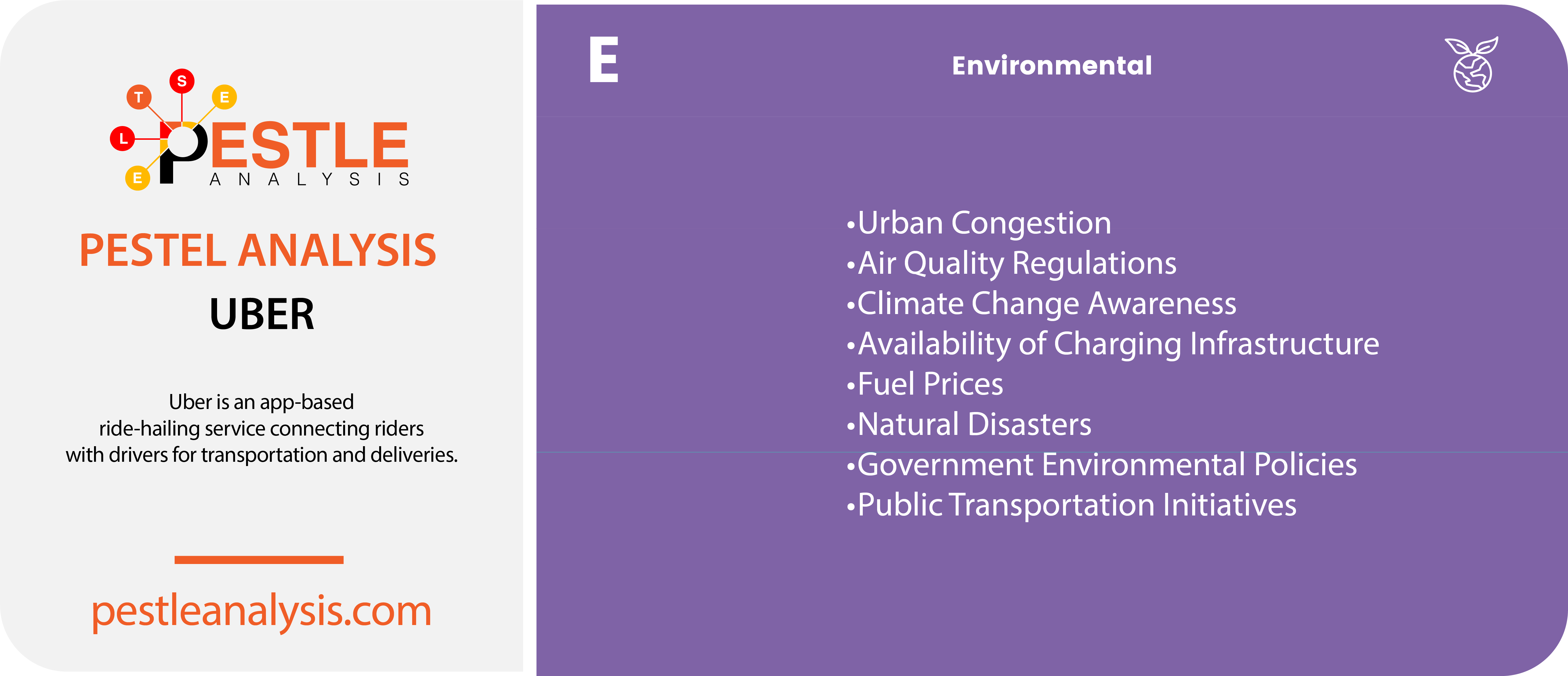
- Urban Congestion: High levels of traffic congestion in urban areas can lead to longer travel times, increased operational costs, and lower customer satisfaction for Uber rides.
- Air Quality Regulations: Strict air quality regulations may require Uber to adopt more environmentally friendly vehicles, such as hybrids or electric cars, to reduce emissions.
- Climate Change Awareness: Increasing public awareness and concern about climate change can drive demand for more sustainable transportation options, influencing Uber to enhance its green initiatives.
- Availability of Charging Infrastructure: The availability of electric vehicle charging stations affects Uber’s ability to integrate electric vehicles into its fleet and support drivers who use them.
- Natural Disasters: Events like hurricanes, floods, and earthquakes can disrupt Uber’s operations, affecting service availability and safety.
- Government Environmental Policies: Policies aimed at reducing carbon footprints and promoting sustainable practices can lead to new regulations that Uber must comply with, impacting operational strategies.
- Public Transportation Initiatives: Investments in and improvements to public transportation systems can influence consumer preferences, potentially reducing the demand for Uber rides in areas with efficient public transit options.
See how green initiatives and regulations impact companies and industries on our environmental factors page.
Recommendations and Takeaways based on the PESTLE analysis of Uber
Key Takeaways
- Regulatory Challenges: Uber faces diverse and strict regulations in different cities and countries, affecting its operational flexibility.
- Technological Dependence: Advancements in smartphone technology, AI, and electric vehicles are crucial for Uber's growth and sustainability.
- Environmental Impact: Increasing emphasis on green transportation and air quality regulations push Uber to adopt more eco-friendly practices.
Recommendations
- Adapt to Local Regulations: Uber should continuously adapt its business model to comply with varying local regulations and licensing requirements.
- Invest in Technology: Uber must keep investing in AI and electric vehicle technology to enhance efficiency and sustainability.
- Promote Green Initiatives: Strengthen efforts in adopting electric vehicles and other eco-friendly practices to align with environmental regulations and consumer preferences.
If you want to dig deeper into Uber and conduct more research, this PESTLE analysis pairs perfectly with our SWOT analysis of Uber.
Together, these tools provide a comprehensive view of Uber's external and internal environments. The PESTLE analysis helps identify external factors like regulations, economic conditions, and technological advancements, while the SWOT analysis focuses on Uber's internal strengths, weaknesses, opportunities, and threats.
Combining these analyses will give you a well-rounded understanding of Uber’s strategic position and areas for improvement.
FAQ
Which are Uber's main competitors?
Uber's main competitors in the ride-hailing and transportation industry are:
- Lyft: A direct competitor in the U.S. market, known for similar ride-hailing services.
- Didi Chuxing: A dominant player in China, offering ride-hailing, bike-sharing, and other transportation services.
- Ola: A major ride-hailing service in India, expanding its footprint in other regions as well.
- Grab: Leading ride-hailing and delivery services in Southeast Asia, particularly in countries like Singapore, Malaysia, and Indonesia.
- Bolt (formerly Taxify): Operating in Europe and Africa, offering ride-hailing, scooters, and food delivery services.
Who owns Uber?
Uber is a publicly traded company, meaning it is owned by its shareholders who hold Uber’s stock.
The company's largest shareholders include institutional investors like Vanguard Group, BlackRock, and Morgan Stanley. Additionally, there are individual stakeholders, such as co-founder Garrett Camp, and former CEO Travis Kalanick, who own significant shares. Uber's ownership structure is spread across a broad range of investors, with major stakes held by venture capital firms like Benchmark Capital and SoftBank Vision Fund.
What's Uber's mission statement?
Uber's mission statement is: "We ignite opportunity by setting the world in motion."
This means Uber aims to provide transportation and economic opportunities globally, enhancing mobility and creating jobs for drivers while delivering convenient and reliable services for passengers. By leveraging technology, Uber seeks to transform the way people move and access transportation, fostering a more connected and accessible world.
What is Uber's business model?
Uber's business model revolves around a platform that connects riders with drivers through its mobile app. Here are the key components:
- Ride-Hailing: Uber matches passengers with drivers for various types of rides, including UberX, UberPool, and UberBlack.
- Surge Pricing: Dynamic pricing adjusts fares based on demand and supply, encouraging more drivers to be available during peak times.
- Revenue Sharing: Uber takes a commission (around 20-30%) from each ride fare.
- Freight and Delivery: Expanding beyond ride-hailing, Uber Freight connects shippers with truck drivers, and Uber Eats delivers food from restaurants to customers.
- Subscriptions: Uber offers subscription services like Uber Pass, providing benefits such as discounted rides and delivery services.
This multi-faceted approach leverages technology to provide convenient and scalable transportation solutions globally.

